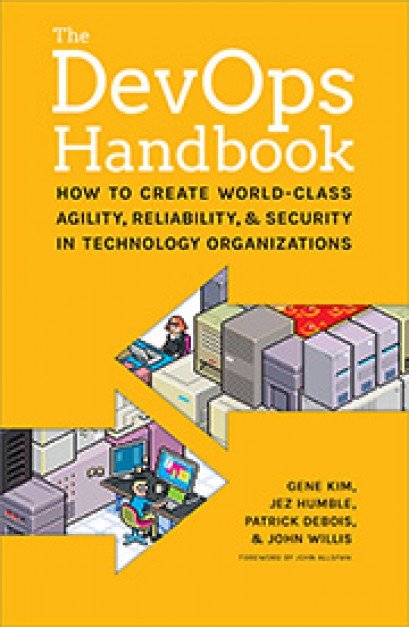14 February 2023

A relatively new software development approach has emerged, which eliminates the need for infrastructure management. It enables developers to concentrate on writing code and deploying applications without worrying about the supporting infrastructure. This approach, referred to as serverless computing, streamlines the software development process and improves efficiency for organisations seeking to simplify their development efforts.
In a serverless environment, there is still a server; however, it is managed and maintained by a cloud provider rather than the organisation. The cloud provider manages the infrastructure, including the server, and provides the necessary resources to run the applications and services. The organisation can focus on writing code and deploying applications without worrying about the underlying infrastructure that supports them, hence the term “serverless”.
1. Increased Efficiency and Speed
One of the most significant advantages of serverless computing is that it increases efficiency and speed. By removing the need to manage infrastructure, developers can focus on writing code and deploying applications more quickly. The ability to focus on writing code and deploying applications without worrying about the underlying infrastructure in serverless computing can aid organisations in releasing new features and updates to their applications more quickly, which is crucial in fast-paced industries.
2. Lower Costs
Another advantage is that it can lower costs, and organisations only pay upfront for their computing resources rather than infrastructure. Eliminating the need to manage infrastructure can assist organisations in reducing their overall expenses and enhancing their financial performance.
3. Improved Scalability
The adoption of serverless technology allows organisations to be more agile in their application deployment and scaling, helping them be more responsive to changing demands and deliver new features and updates faster. The technology also offers improved scalability, enabling organisations to adjust the number of applications to meet varying demands quickly.
4. Enhanced Security
By removing the need for infrastructure management, this approach to software development can enhance security by reducing the risk of security breaches and ensuring that applications are secure. Additionally, built-in security features, such as encryption, can help protect sensitive data.
5. Better Resource Allocation
With better resource allocation, organisations can allocate resources more efficiently, which can help them to reduce waste and improve their overall resource utilisation.
6. Low Environmental Impact
In addition to the other advantages, serverless technology has a low environmental impact. Reducing the need for infrastructure can help organisations reduce their carbon footprint and minimise their environmental impact.

Here are some best practices for successfully implementing serverless computing in a DevOps environment:
● Careful planning: Before implementing serverless technology, organisations should carefully plan their implementation, including identifying the goals and objectives they want to achieve, the workloads they want to run, and the resources they need to support these workloads.
● Implementation: During the implementation phase, organisations should focus on building a secure and scalable environment that meets their needs and goals. The implementation phase may involve selecting an appropriate serverless platform, establishing the necessary infrastructure, and deploying the applications.
● Testing: Organisations should thoroughly test their computing environment to ensure that it functions as expected and meets their requirements. The testing phase may encompass functional testing, performance testing, and security testing.
● Ongoing monitoring and management: Organisations should regularly monitor their implemented serverless environment to ensure that it operates as expected and meets their ongoing needs. This process may involve monitoring resource usage, monitoring performance, and patching any security vulnerabilities.
● Security: For organisations, ensuring the security of their serverless computing environment and protecting their data from potential security breaches is critical. To accomplish this, they should prioritise security during the implementation process by implementing measures such as encryption, access controls, and continuous monitoring; this requires careful planning, implementation, and ongoing monitoring and management.
By following these best practices, organisations can ensure a successful implementation of serverless technology in their DevOps environment and reap the benefits of this powerful technology.
Examples of organisations that have successfully implemented serverless computing in their DevOps environments include Netflix, which uses the technology to stream movies and TV shows to millions of users worldwide. Another example is Amazon Web Services (AWS), which provides a serverless platform that enables organisations to build and run applications and services without managing infrastructure.
The impact on application development is significant. It can lead to a more efficient and quicker release of new features and application updates, especially in fast-paced industries. Organisations can focus on writing code and deploying applications without worrying about the underlying infrastructure.
The future is bright, and its potential in the industry is vast. As organisations adopt serverless technology, they can take advantage of its many benefits, including increased efficiency and speed, lower costs, improved scalability, enhanced security, and better resource allocation.
Integrating serverless computing with other technologies, such as AI and IoT, can revolutionise how organisations build and deploy applications. By leveraging the power of serverless technology, organisations can develop and deploy AI and IoT applications more quickly and efficiently, which can help them to stay ahead of the competition.
● Allows organisations to focus on developing and deploying applications without worrying about managing the underlying infrastructure.
● It provides cost savings as organisations only pay for what they use and can scale their resources up or down as needed.
● Enables organisations to release new features and updates to their applications more efficiently and quickly, especially in fast-paced industries.
● Best practices for implementation include careful planning, thorough testing, ongoing monitoring and management, and prioritising security.
● Organisations should prioritise security by implementing security measures such as encryption, access controls, and continuous monitoring.
● The technology is an excellent fit for AI and IoT projects. It allows organisations to scale their resources on demand and only pay for what they use, which can help reduce costs and improve efficiency.

